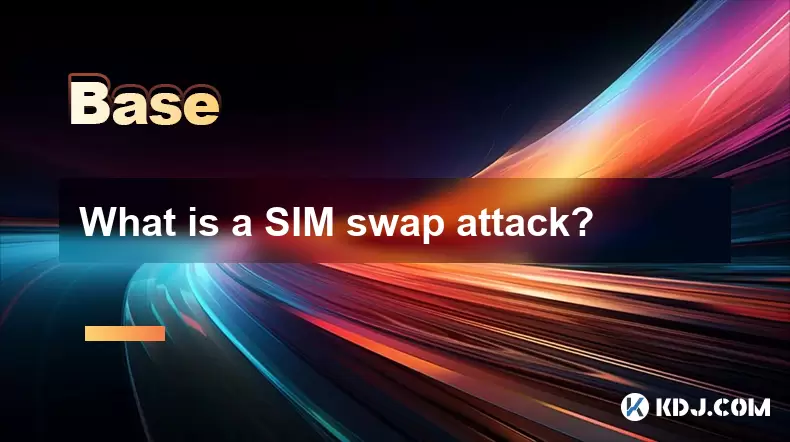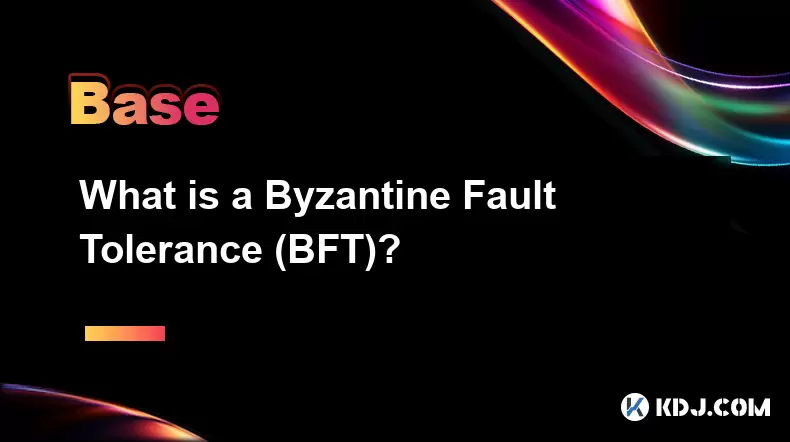-
 Bitcoin
Bitcoin $109,459.7682
2.44% -
 Ethereum
Ethereum $2,598.6052
6.29% -
 Tether USDt
Tether USDt $1.0003
0.00% -
 XRP
XRP $2.2734
3.95% -
 BNB
BNB $661.4886
1.58% -
 Solana
Solana $155.4825
4.35% -
 USDC
USDC $0.9999
-0.02% -
 TRON
TRON $0.2838
1.04% -
 Dogecoin
Dogecoin $0.1740
8.25% -
 Cardano
Cardano $0.6047
9.04% -
 Hyperliquid
Hyperliquid $40.2302
6.50% -
 Sui
Sui $2.9863
10.05% -
 Bitcoin Cash
Bitcoin Cash $509.5786
0.60% -
 Chainlink
Chainlink $13.8156
6.03% -
 UNUS SED LEO
UNUS SED LEO $9.0142
0.69% -
 Avalanche
Avalanche $19.0337
8.68% -
 Stellar
Stellar $0.2438
5.17% -
 Toncoin
Toncoin $2.9012
3.59% -
 Shiba Inu
Shiba Inu $0.0...01210
6.20% -
 Litecoin
Litecoin $90.0882
7.05% -
 Hedera
Hedera $0.1597
8.53% -
 Monero
Monero $326.3340
2.88% -
 Polkadot
Polkadot $3.6365
9.32% -
 Bitget Token
Bitget Token $4.6162
2.72% -
 Dai
Dai $1.0001
0.00% -
 Ethena USDe
Ethena USDe $1.0002
-0.01% -
 Uniswap
Uniswap $7.6403
10.47% -
 Pepe
Pepe $0.0...01060
12.03% -
 Aave
Aave $281.3664
7.56% -
 Pi
Pi $0.4992
1.76%
What is a SIM swap attack?
A SIM swap attack allows hackers to take over your phone number, enabling them to bypass two-factor authentication and access sensitive accounts like cryptocurrency wallets.
Jul 03, 2025 at 08:01 am

Understanding the Concept of a SIM Swap Attack
A SIM swap attack refers to a type of cyberattack where a malicious actor gains control of a victim’s mobile phone number by transferring it to a SIM card they control. This is often done through social engineering tactics aimed at deceiving customer service representatives at telecommunications companies. Once the attacker has access to the victim’s phone number, they can intercept SMS-based two-factor authentication (2FA) codes, reset passwords for online accounts, and even take over cryptocurrency wallets or exchanges linked to that number.
The core danger lies in how many services rely on SMS verification as a security layer. Even if an individual uses strong passwords, compromising the phone number can bypass these protections entirely.
How Does a SIM Swap Attack Work?
Attackers typically begin by gathering personal information about their target. This may include details like full name, date of birth, address, and the last four digits of their Social Security number—information that can be sourced from data breaches, phishing attempts, or public records.
Once enough personal data is collected, the attacker contacts the victim's mobile carrier under false pretenses—claiming they've lost their SIM card or need a new one. They may impersonate the account holder and request a SIM swap or transfer. If the telecom provider’s customer support fails to verify identity properly, the attacker's SIM becomes active on the victim’s number.
- The attacker calls the telecom provider and claims to be the account holder.
- They answer security questions using stolen or guessed information.
- A new SIM card is issued and activated, disconnecting the original device.
- With control over the number, the attacker resets passwords on linked accounts.
Risks Associated with SIM Swapping in the Cryptocurrency Space
Cryptocurrency users are particularly vulnerable to SIM swapping because many exchanges and wallet services use phone numbers for 2FA and password recovery. Once a hacker controls the number, they can gain access to crypto holdings stored in wallets or exchange accounts.
This form of identity theft can lead to irreversible losses, especially since blockchain transactions cannot be undone. High-profile cases have shown attackers draining thousands or even millions of dollars worth of digital assets within minutes after gaining access to a victim’s phone number.
- Password reset links sent via SMS can be intercepted.
- Exchange login confirmations and approvals can be redirected.
- Wallet backup phrases or seed keys may be retrieved through linked email accounts.
Recognizing the Signs of a SIM Swap Attack
Victims may not realize their number has been hijacked until they lose cellular connectivity. A sudden loss of signal or inability to make calls and receive texts is often the first red flag. Additionally, users might receive unexpected notifications from online services indicating that their account has been accessed from a new location or device.
Unusual emails confirming password changes or account logins should raise immediate suspicion. In some cases, telecom providers may send alerts when a SIM change occurs, but this depends on the carrier and plan features enabled.
- Inability to connect to mobile network without explanation.
- Receiving unsolicited confirmation emails from online services.
- SMS messages related to account changes you did not initiate.
Protecting Yourself Against SIM Swap Attacks
To mitigate the risk of falling victim to a SIM swap, individuals should take proactive steps with both their telecom provider and online accounts. One of the most effective measures is setting up a unique PIN or password with the mobile carrier that must be provided before any account changes are made.
Using stronger forms of two-factor authentication, such as hardware tokens or authenticator apps, can also reduce reliance on SMS-based codes. Additionally, enabling account alerts and monitoring for suspicious activity helps detect unauthorized access early.
- Contact your mobile carrier to set up a verbal or numeric PIN.
- Switch from SMS-based 2FA to app-based solutions like Google Authenticator or Authy.
- Enable email and SMS notifications for all account activities.
- Use multi-layered account verification options wherever available.
Frequently Asked Questions
Q: Can I get my phone number back after a SIM swap attack?
Yes, contacting your mobile carrier immediately can help reverse the swap. However, during this window, attackers may already have accessed linked accounts.
Q: Is SIM swapping illegal?
Yes, SIM swapping without authorization constitutes identity theft and fraud, which are criminal offenses in many jurisdictions.
Q: How common are SIM swap attacks?
While exact figures vary, reports indicate a significant rise in such incidents, especially targeting cryptocurrency holders and high-net-worth individuals.
Q: Are prepaid phone plans more vulnerable to SIM swaps?
Prepaid accounts may lack robust account verification systems compared to postpaid plans, making them easier targets for SIM swap attacks.
Disclaimer:info@kdj.com
The information provided is not trading advice. kdj.com does not assume any responsibility for any investments made based on the information provided in this article. Cryptocurrencies are highly volatile and it is highly recommended that you invest with caution after thorough research!
If you believe that the content used on this website infringes your copyright, please contact us immediately (info@kdj.com) and we will delete it promptly.
- Altcoin Alert: Binance Listings and the Wild West of Crypto
- 2025-07-03 14:30:11
- Decentralized Stablecoins in 2025: Challenging Centralized Counterparts?
- 2025-07-03 14:30:11
- Meme Coin Mania: Is BTC Bull the Next Big Thing in a Limited Time BTC Bull Run?
- 2025-07-03 12:30:11
- Bitcoin Soars to $109,000: What's Fueling the Crypto Rally?
- 2025-07-03 10:30:13
- Hong Kong: Racing to Be the World's Tokenization Hub
- 2025-07-03 14:50:11
- Splatterhouse Rocks Retro Scene: A UK Magazine Deep Dive
- 2025-07-03 12:30:11
Related knowledge

What is open interest in derivatives?
Jul 03,2025 at 02:49pm
Understanding Open Interest in DerivativesOpen interest is a critical metric used in the cryptocurrency derivatives market, particularly when analyzing futures and options contracts. It represents the total number of outstanding contracts that have not been settled or closed by either party involved. Unlike trading volume, which counts all trades made i...

What is a liquidation cascade?
Jul 03,2025 at 07:15am
Understanding the Concept of LiquidationIn the realm of cryptocurrency trading, liquidation refers to the process by which a trader's position is automatically closed due to insufficient funds to maintain the leveraged trade. This typically occurs when the market moves against the trader's position and their account equity falls below the required maint...

What is a hard fork coordinator?
Jul 03,2025 at 12:42pm
Understanding the Role of a Hard Fork CoordinatorIn the world of blockchain and cryptocurrencies, a hard fork coordinator plays a critical role during major network upgrades. A hard fork is a significant change to a blockchain’s protocol that makes previously invalid blocks or transactions valid (or vice versa). This type of upgrade requires all nodes o...

What is a Byzantine Fault Tolerance (BFT)?
Jul 03,2025 at 11:49am
Understanding the Concept of Byzantine Fault ToleranceByzantine Fault Tolerance (BFT) is a critical concept in distributed systems, particularly within the realm of blockchain technology and cryptocurrencies. It refers to the ability of a system to continue functioning correctly even when some components fail or behave maliciously. The term originates f...

What is a subDAO?
Jul 03,2025 at 09:36am
Understanding the Concept of SubDAOA SubDAO, short for Sub-Decentralized Autonomous Organization, is a specialized entity that operates under the umbrella of a larger DAO (Decentralized Autonomous Organization). It functions with its own set of rules, governance mechanisms, and tokenomics while remaining aligned with the overarching goals of the parent ...

What is the Travel Rule in crypto?
Jul 03,2025 at 10:28am
Understanding the Travel Rule in CryptocurrencyThe Travel Rule is a regulatory requirement initially introduced by the Financial Action Task Force (FATF) for traditional financial institutions. It has since been extended to cryptocurrency transactions, especially those involving Virtual Asset Service Providers (VASPs). The core purpose of this rule is t...

What is open interest in derivatives?
Jul 03,2025 at 02:49pm
Understanding Open Interest in DerivativesOpen interest is a critical metric used in the cryptocurrency derivatives market, particularly when analyzing futures and options contracts. It represents the total number of outstanding contracts that have not been settled or closed by either party involved. Unlike trading volume, which counts all trades made i...

What is a liquidation cascade?
Jul 03,2025 at 07:15am
Understanding the Concept of LiquidationIn the realm of cryptocurrency trading, liquidation refers to the process by which a trader's position is automatically closed due to insufficient funds to maintain the leveraged trade. This typically occurs when the market moves against the trader's position and their account equity falls below the required maint...

What is a hard fork coordinator?
Jul 03,2025 at 12:42pm
Understanding the Role of a Hard Fork CoordinatorIn the world of blockchain and cryptocurrencies, a hard fork coordinator plays a critical role during major network upgrades. A hard fork is a significant change to a blockchain’s protocol that makes previously invalid blocks or transactions valid (or vice versa). This type of upgrade requires all nodes o...

What is a Byzantine Fault Tolerance (BFT)?
Jul 03,2025 at 11:49am
Understanding the Concept of Byzantine Fault ToleranceByzantine Fault Tolerance (BFT) is a critical concept in distributed systems, particularly within the realm of blockchain technology and cryptocurrencies. It refers to the ability of a system to continue functioning correctly even when some components fail or behave maliciously. The term originates f...

What is a subDAO?
Jul 03,2025 at 09:36am
Understanding the Concept of SubDAOA SubDAO, short for Sub-Decentralized Autonomous Organization, is a specialized entity that operates under the umbrella of a larger DAO (Decentralized Autonomous Organization). It functions with its own set of rules, governance mechanisms, and tokenomics while remaining aligned with the overarching goals of the parent ...

What is the Travel Rule in crypto?
Jul 03,2025 at 10:28am
Understanding the Travel Rule in CryptocurrencyThe Travel Rule is a regulatory requirement initially introduced by the Financial Action Task Force (FATF) for traditional financial institutions. It has since been extended to cryptocurrency transactions, especially those involving Virtual Asset Service Providers (VASPs). The core purpose of this rule is t...
See all articles

























































































